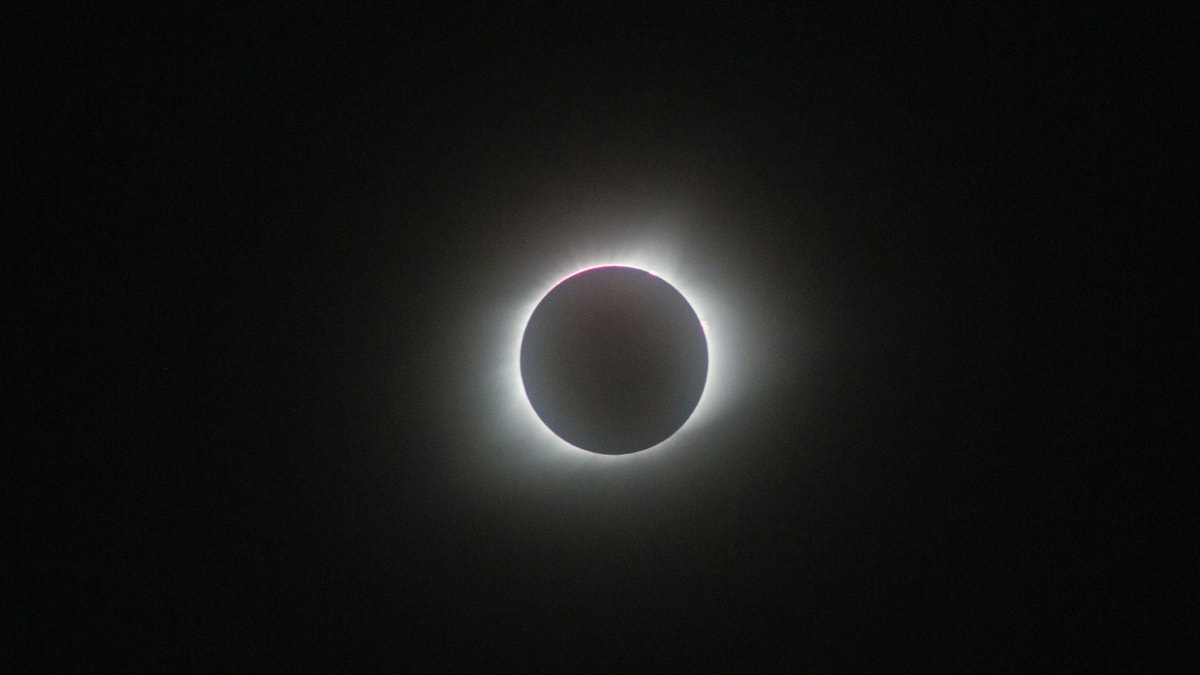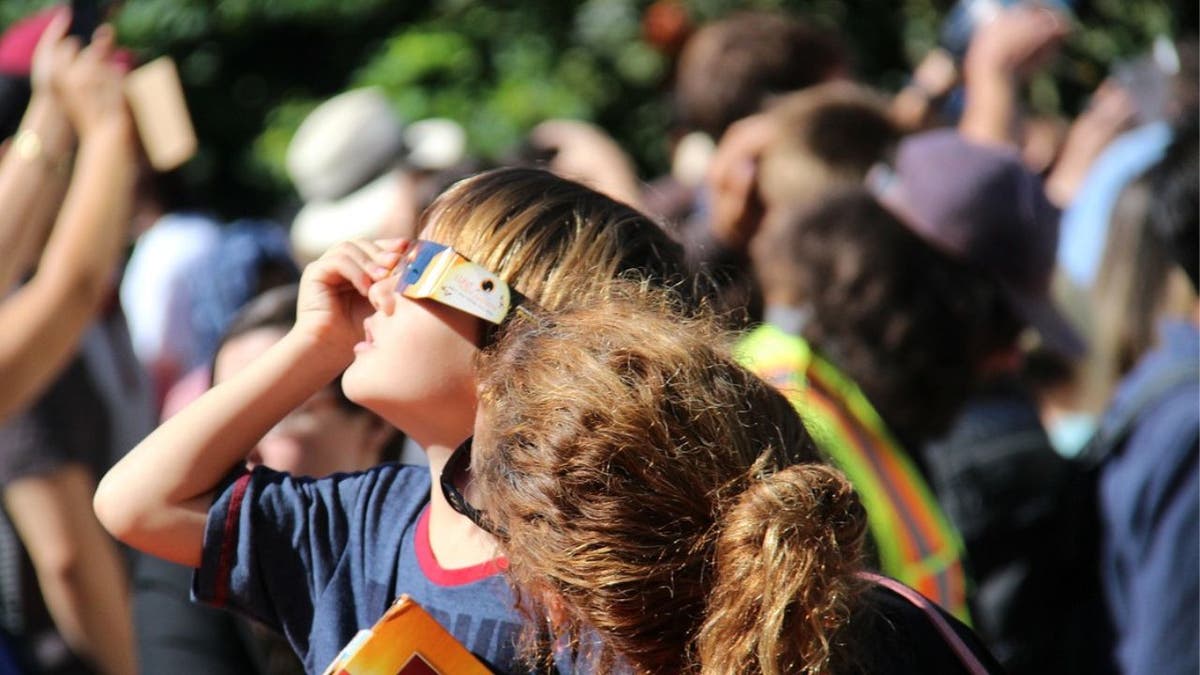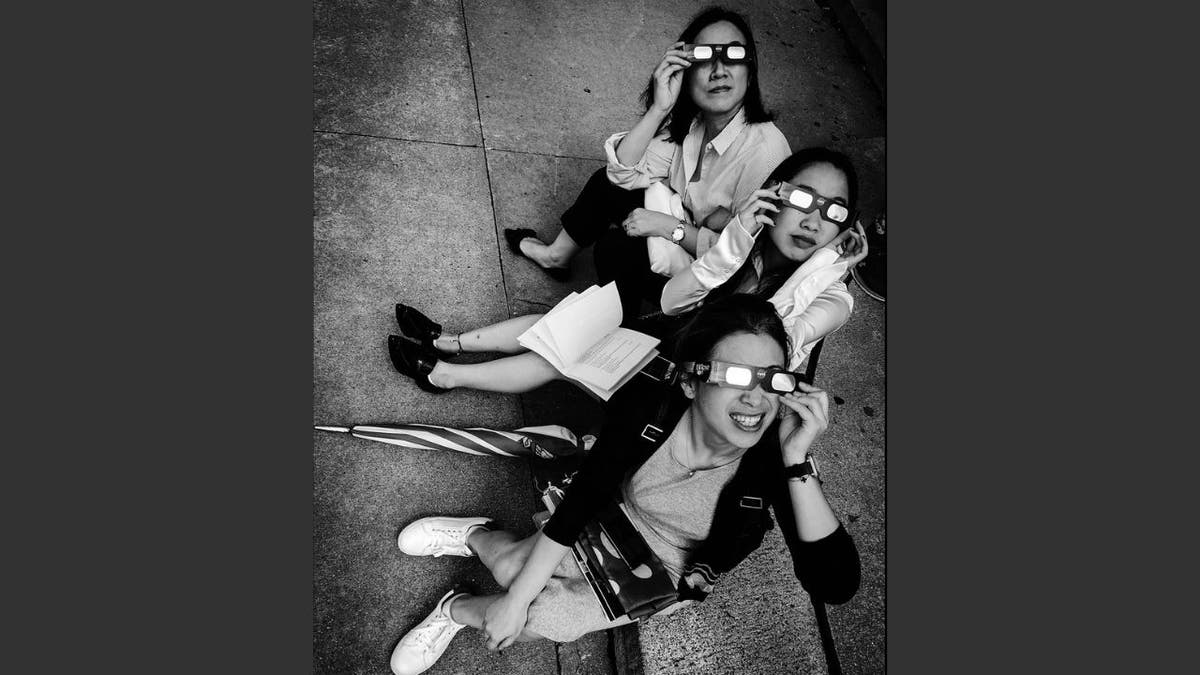Depending on where you live in the United States, this month will be your last chance to witness a total or partial solar eclipse until 2044.
On April 8, our moon will pass between Earth and the sun, temporarily blocking light from the sun.
The total eclipse will occur for those living throughout the Midwest, eastern Mexico and a small part of eastern Canada.
Here are some quick tips on avoiding eye injuries from staring at the sun during an eclipse.

Solar eclipse (Kurt “CyberGuy” Knutsson)
Tip 1 — Wear proper eclipse glasses
Eclipse glasses are significantly darker than normal sunglasses and are designed specifically for viewing solar events. To avoid buying a pair of fake eclipse glasses, ensure that any pair you buy features the ISO 12312-2 filter. You run the risk of serious eye injury and even blindness, so make sure your eclipse glasses are up to par and have the ISO 12312-2 filter.
NEW YORK INMATES SUE CORRECTIONS DEPARTMENT TO WATCH SOLAR ECLIPSE AMID PLANNED PRISON LOCKDOWNS

Child wearing eclipse glasses (Kurt “CyberGuy” Knutsson)
MORE: HOW THE DREAM CHASER SPACEPLANE PLANS TO SHAKE UP SPACE TRAVEL IN THE FUTURE
Tip 2 — How to ensure you have the right glasses
NASA itself doesn’t approve of any single brand of eclipse glasses. However, they do point towards the American Astronomical Society’s list of safe options. NASA also recommends avoiding online marketplaces to buy your eclipse glasses. Due to the popularity of the upcoming solar event, third-party vendors have flooded online marketplaces such as Amazon with knockoff eclipse glasses.
If you still have eclipse glasses after enjoying the 2017 solar eclipse, reusing them is a good idea. The actual ISO 12312-2 filter and lens are good forever if the lens is free of cracks or punctures. However, buying a new pair is a good idea if you are uncertain about it.

A group of people wearing eclipse glasses (Kurt “CyberGuy” Knutsson)
MORE: ARE YOU READY TO TAKE CRAZY RIDE TO OUTER SPACE IN 8-PASSENGER LUXURY BALLOON?
Tip 3 — How to wear eclipse glasses
The only time you can safely remove your eclipse glasses is during the solar eclipse’s totality. This period lasts around three minutes, and you’ll know it’s happening because you won’t be able to see the sun through your eclipse glasses anymore . The totality is when the moon entirely obscures the sun during its passing.
When you are wearing your eclipse glasses and look up at the sun, you’ll see the glow of the sun. When there is absolutely no glow left, feel free to take a few seconds and then take your eclipse glasses off.
GET FOX BUSINESS ON THE GO BY CLICKING HERE

A group of women wearing eclipse glasses (Kurt “CyberGuy” Knutsson)
MORE: ELON MUSK WANTS TO SELL YOU INTERNET ACCESS FROM SPACE
Tip 4 — How to make and use a pinhole projector
If you cannot purchase proper eclipse glasses, you can still enjoy the eclipse with a homemade pinhole projector. Making one is easy; here’s how to do it:
- Cut a 1- to 2-inch square or rectangle out of the centerpiece of plain white paper or white cardboard.
- Tape a piece of aluminum foil over the square or rectangle you just cut out.
- Next, use a pin or thumbtack to poke a small hole in the foil.
- Use a second piece of paper or cardboard as the screen on which the image will be projected.
To use your projector, follow these steps:
- Place the paper screen on the ground.
- Stand with the sun at your back.
- Hold your projector with the foil facing up toward the sky.
- Ensure that you are viewing the projected image and not looking directly at the sun.
- Adjusting how far you hold the projector from the screen will make the eclipse image appear larger or smaller.
MORE: HOW TO PROTECT YOURSELF FROM THE SUN
Kurt’s key takeaways
This is your last chance to see a total or partial eclipse until 2044, so make sure you follow these steps to find proper eclipse glasses or build your pinhole projector. You can also use a colander as a makeshift projector or make a sturdier projector with a cereal box. The path of totality for the eclipse will center on the East Coast and Midwestern region of the United States, but if you live elsewhere, you’ll still be able to see a partial eclipse. A word of advice to any photographers out there: you will need to get a camera with a lens with an ISO 12312-2 filter applied, as looking at the sun directly through a camera’s viewfinder will still cause damage to your eye.
CLICK HERE TO GET THE FOX NEWS APP
The path of totality for this eclipse cuts across several regions. If you could be anywhere in the world to witness this event, where would you choose and why? Let us know by writing us at Cyberguy.com/Contact.
For more of my tech tips & security alerts, subscribe to my free CyberGuy Report Newsletter by heading to Cyberguy.com/Newsletter.
Ask Kurt a question or let us know what stories you’d like us to cover.
Answers to the most asked CyberGuy questions:
Copyright 2024 CyberGuy.com. All rights reserved.

